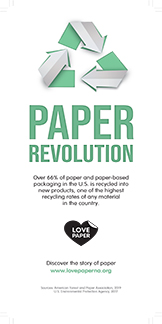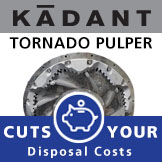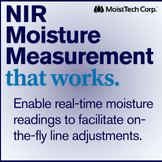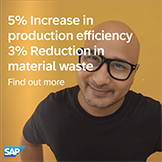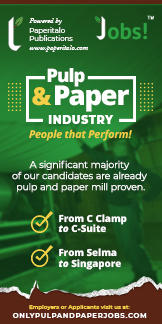The paper manufacturing industry has relied upon human-to-machine interaction for hundreds of years. It was sight, sound, smell, feel, and off-line lab tests that drove control moves in the process. I even heard old-school machine tenders tasting paper samples to determine ash content long before the crucibles came out of the oven. Anyone remember back tenders beating the reel with a stick to find hard and soft spots correlating to caliper profiles? If necessary, the subsequent control moves usually involved a human pushing buttons or turning dials or physically messing with valves and actuators. Decades of personal experience drove hiring and promotion decisions to make sure those operator instincts were finely tuned. Meeting production goals depended upon it.
Slowly but surely automation replaced many standard operating procedures (and instincts) humans developed to keep their process in spec. PID control (proportional-integral-derivative) algorithms soon became the king of automation by looking at present, past, and future states of the thousands of process control loops concurrently running the pulping and paper making process. With some "bump tests" of the control device, you could "tune" the PID control with proper time delay and rate of change to turn the loop on "auto" and not have to worry about human operators continuously watching the process. Control loops operated independently, but in aggregate, kept a process in spec with much more resiliency than ever before.
Linear programming (LP) models have been used for decades in paper mills to set the trim on the machine and slitters on the winder to make all the different size customer orders. Ladder logic has powered PLCs to control different aspects of paper production for decades as well. Both are advanced, automated algorithms that have been employed in mills to save or make millions in profits. These types of algorithms are intensely mathematical or logical in nature. The models are built by experienced humans, then real-time scenarios of process inputs are tested against the models and control parameters to find the best answer as the next control move. These types of algorithms are noticeably different than PID control (a singular mathematical equation) that dominated the industry for most of the century.
Computer chips came down in size and price in the 80s and 90s. As a result, those silicon wafers started doing more for papermakers. In an evolutionary sense, this is when Artificial Intelligence started emerging in our industry as an infant. Of course, on a much smaller scale than what we are experiencing with today's versions of ChatGPT, xAI, or Claude. Smaller, cheaper, faster digital technology became increasingly available, the algorithms grew more sophisticated.
As technology development continued, so did adoption of algorithms and automation. Machine vision advanced quickly with high-speed cameras watching the draws and pickups and inspection systems finding and marking defects at the reel. These advancements are real game changers for operators, who have gotten along running blind until these systems were adopted. Using this tech, operators could trace a source of a sheet break or find the CD/MD location every single defect. 'End customer' expectations have evolved so much that manufacturers are now practically required to have these systems to be competitive.
AI became a toddler in our industry as neural nets arrived on the scene. This type of algorithm was employed to make all the individual control loops and process signals start working together through relational matrices running on a personal computer on the process control network. Maintaining setpoint targets was still the PIDs and PLCs job, but now with neural net control (many companies called it APC, or advanced process control), setpoint targets were modified on underlying control loops to be able to control a higher order variable in the process. The neural nets could do something even more magical...predict measurements of variables on a papermachine long before the actual measured value was determined physically. Things like pulp kappa number, moisture out of the press, coat weight, or the aforementioned ash content operators had to taste.
I think we are entering the pubescent age of AI in the paper mill. Every company on the planet is trying to figure out what can be done using the vast, cheap, fast brainpower AI has developed as it emerged - trained on large data sets. Pattern recognition is the laymen's term for it. All types of intelligent solutions are being developed from every supplier to make the industry less reliant on people's instinct and experience. Formation and wetline control, inventory control, defect classification, workorder prioritization. So many things will improve with constant oversight and millions of scenarios tested in minutes. Unknown process interactions will become apparent. Optimization will be the rule, not the goal.
I have to admit, I'm no expert on AI, just an observer. I can't even tell you what a large language model really is. I've always heard that the algorithm is like a neural net that "chooses the next most likely word" when responding to a question. How does that even work? It's lightening fast and not always right.
My impression is that AI at this stage is like a naïve adult - let's call it a "college student." Capable, yet, not confident or trusted. The new AI control strategies give me pause until we see them everywhere. Unlike previous control systems, which relied on smart humans to tune them as conditions changed, new systems are self-learning. That means they get better all by themselves with use and exposure to more and more data. The 80-year march I just spent 900 words describing will happen in 8 years, or maybe even 8 months. Secondly, there is a notion in most people's minds that AI is cheaper than all the humans needed to manage the same system, which would drive owners and investors to want to lower costs. Ultimately, the customers will demand it through quality standards and prices they are willing to pay for the paper produced.
This whole period in human history is just so fascinating. If you turn off the news and manage to minimize or eliminate your own doom scrolling online, you will naturally be spellbound by what we all have at our fingertips. At least, it's spellbinding to me. Maybe someday, AI datacenters will be logically co-located at integrated paper mills due to the symbiotic needs of both industries. Datacenters input is electrical power and output is hot water, while an integrated paper mills input is hot water and output is electrical power from pulp mill recovery. That would be the true marriage of cellulose and silicon.
Time marches on, entropy continues to increase, and we humans will innovate to stay relevant and in control. With AI as a tool, I don't think our human minds are capable of knowing what to expect. Bounded rationality is the term in economics that states we don't know what we don't know, it's cost-prohibitive to find out all we need to know, and we don't have the time to do all that with our moment-to-moment decisions. AI blows those "bounds" away. Full steam ahead - this industrial revolution is going to amaze us all.
Steve Sena (stevesena@me.com) is a Cincinnati native. He obtained degrees in Paper Science & Engineering from Miami University in Oxford, OH and an MBA concentrating in Economics from Xavier University. He's worked for a broad array of leading producers, suppliers, and converters of pulp and paper grades.





